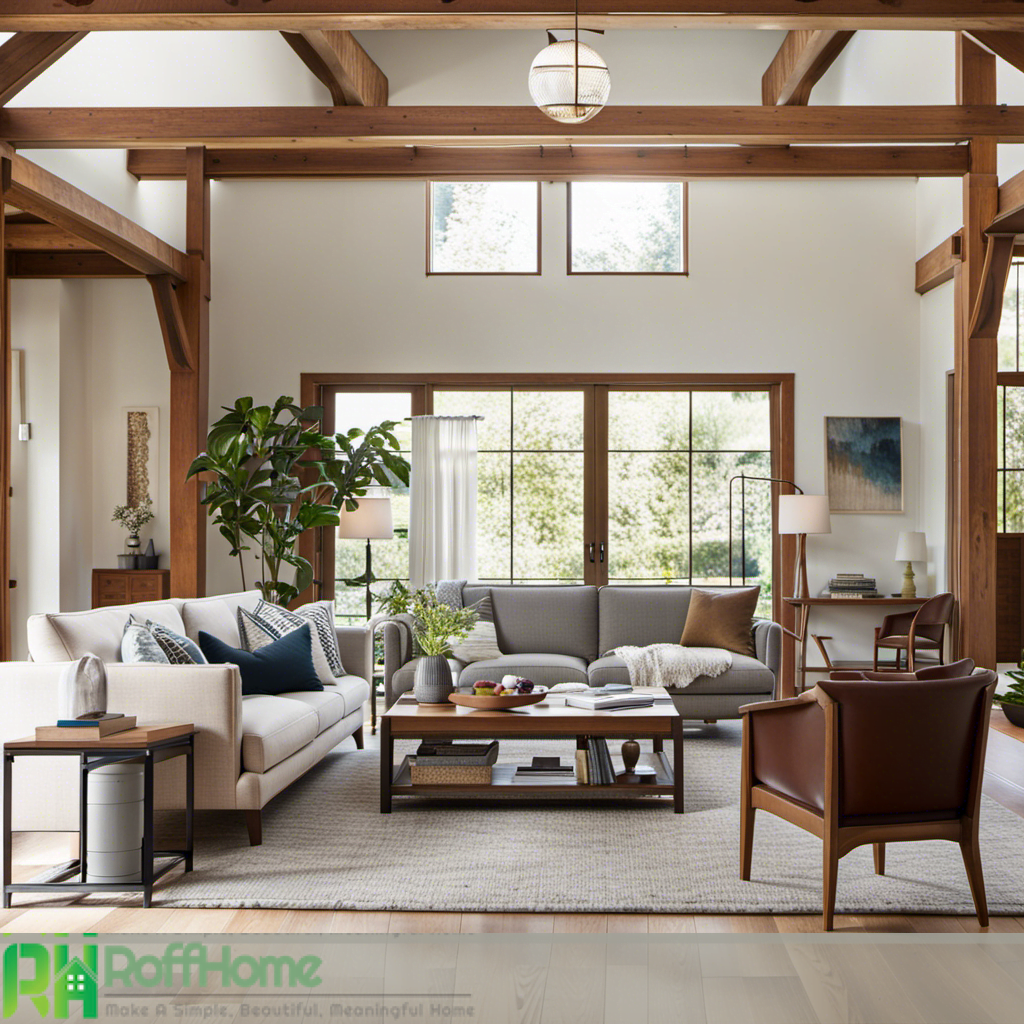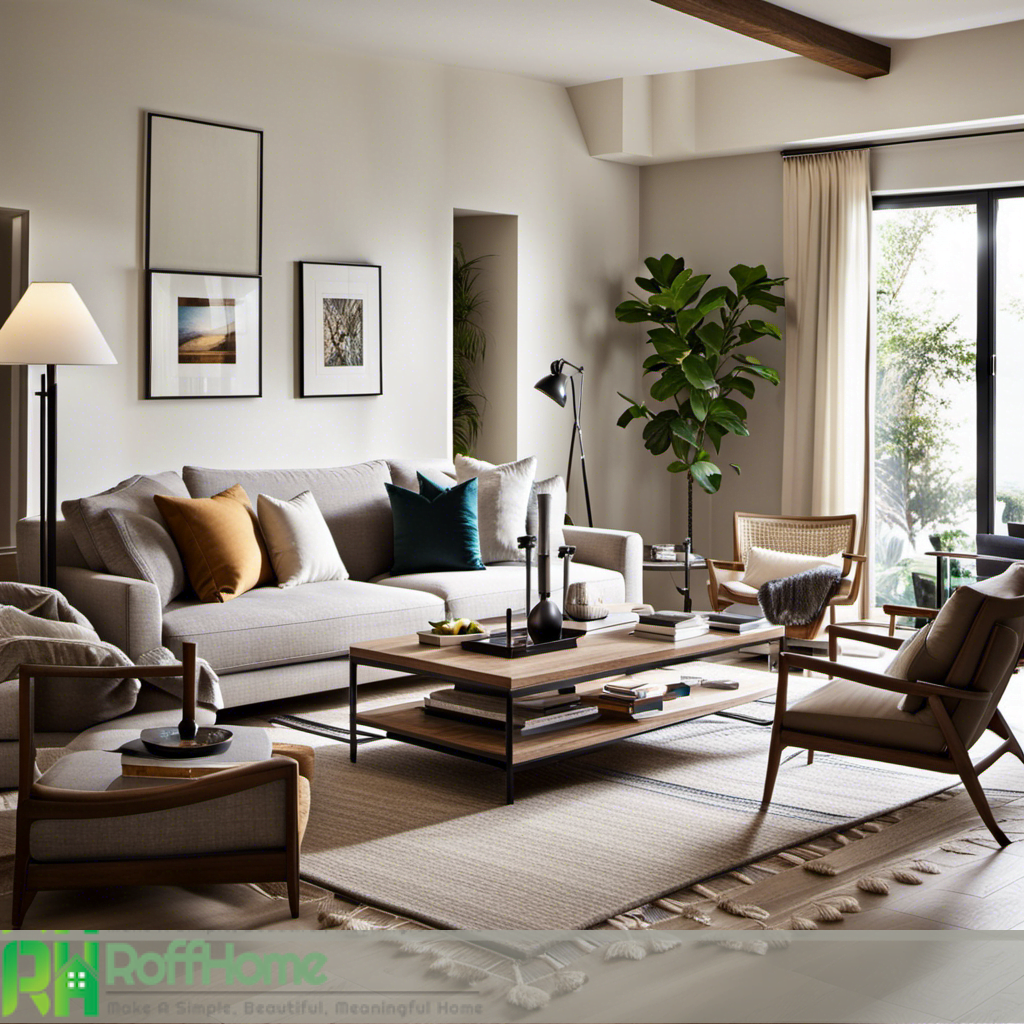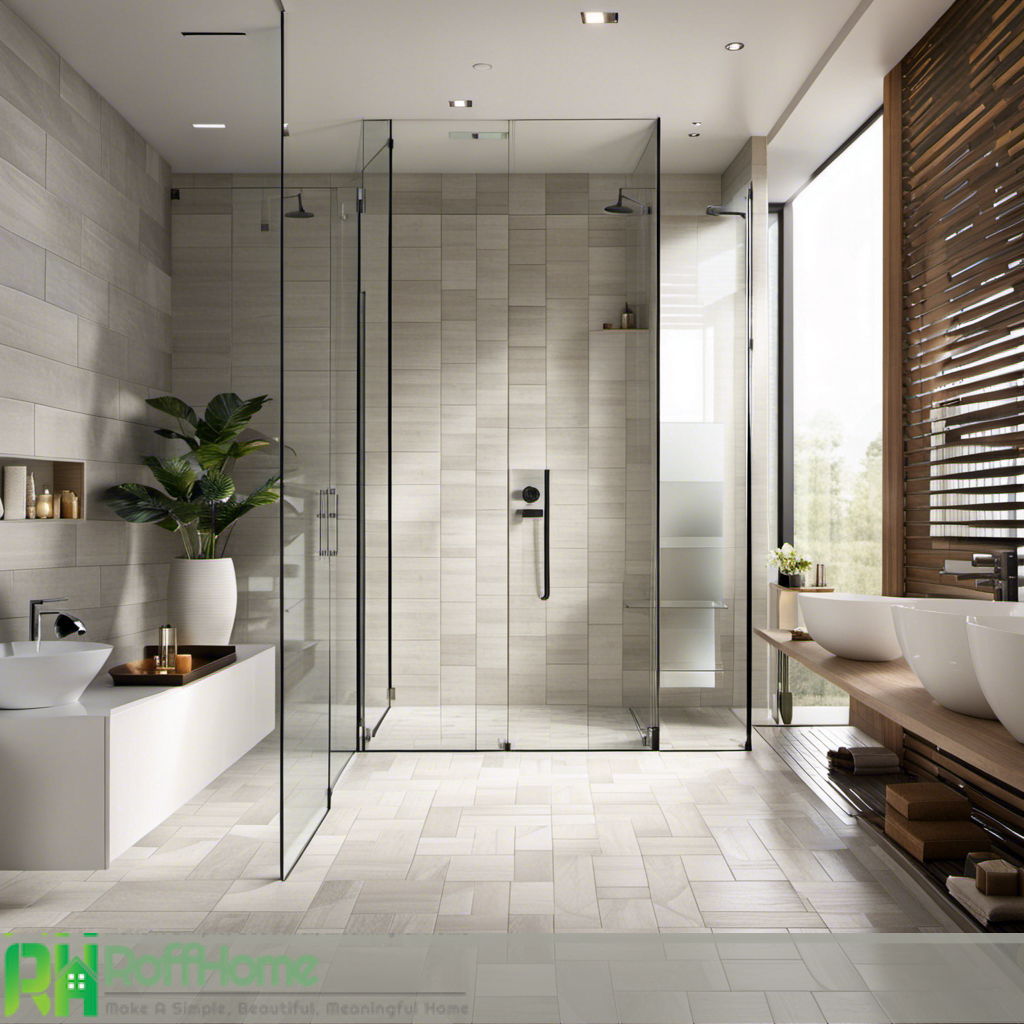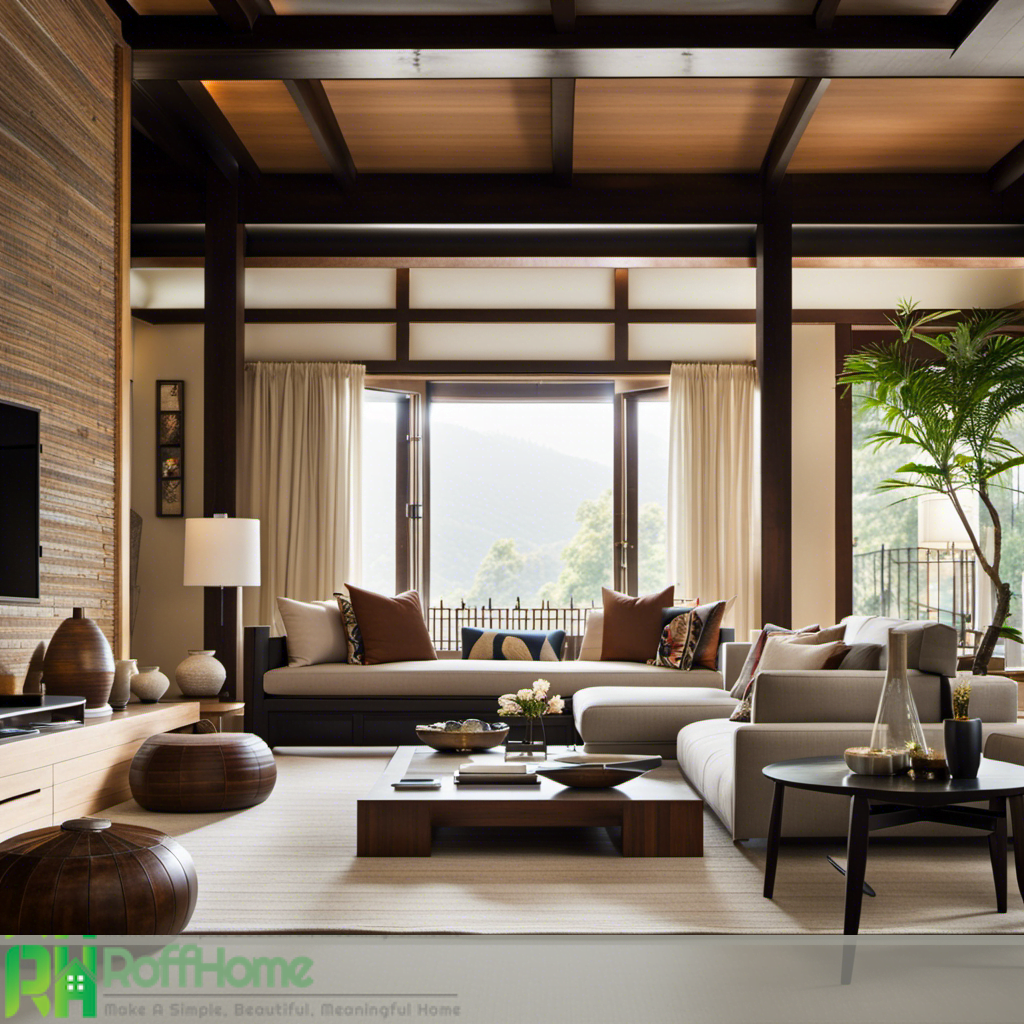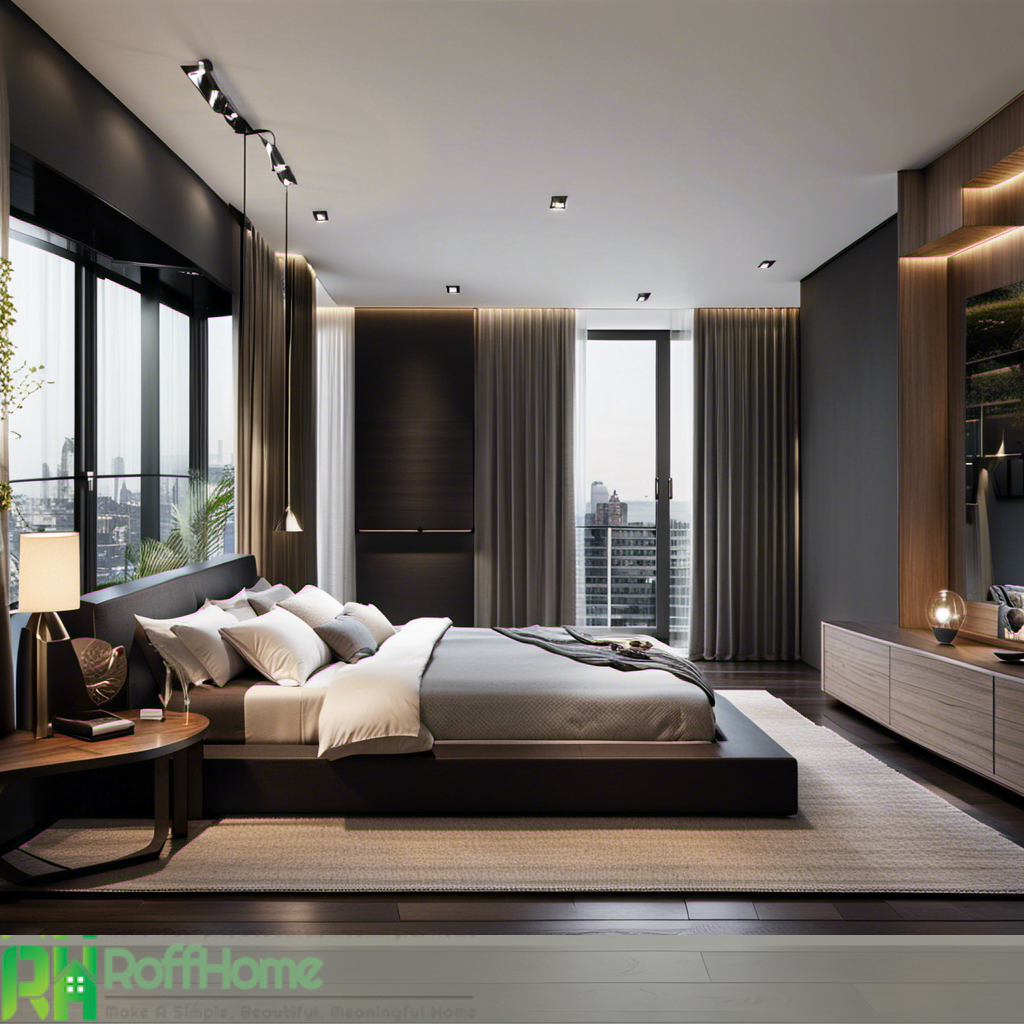Captivating Dining Room with Red Walls: Design Inspiration and Decorating Ideas
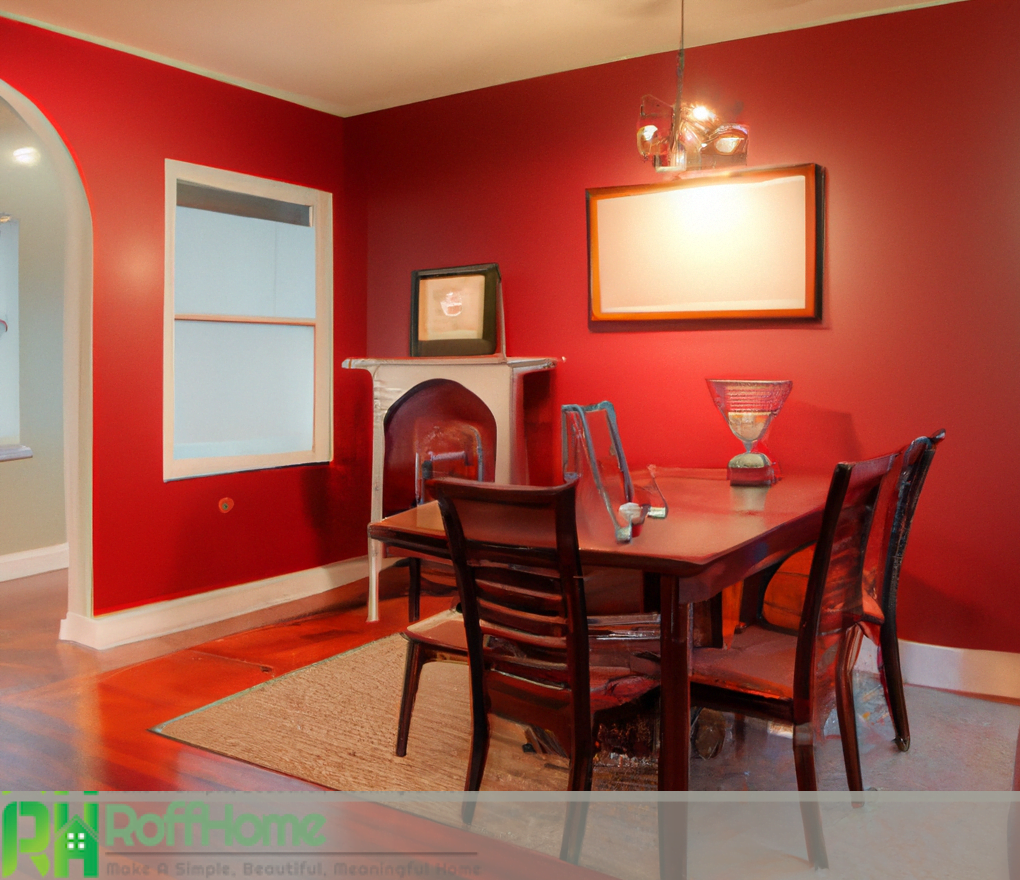
A dining room with red walls instantly commands attention and exudes a captivating aura. Red, a bold and vibrant color, has long been associated with energy, passion, and warmth. When incorporated into the interior design of a dining room, it becomes a striking centerpiece that sets the tone for memorable gatherings and engaging conversations.
Red walls in a dining room are a bold and confident choice, making a powerful statement about the homeowner’s sense of style. They infuse the space with a sense of drama and create an inviting ambiance that captivates both occupants and guests. The color scheme of a dining room with red walls can be carefully curated to enhance the overall aesthetic and atmosphere. Complementary hues or contrasting shades can be used for furniture, lighting, curtains, rugs, artwork, and other accessories to achieve a harmonious balance.
In modern designs, red walls can add a touch of sophistication and create a contemporary atmosphere. Alternatively, red walls can evoke a sense of timeless elegance and charm in a traditional setting. The psychology of color suggests that red can stimulate appetite and create a lively atmosphere, making it an excellent choice for a dining room.
Moreover, incorporating Feng Shui principles into a dining room with red walls can further enhance the positive energy and flow of the space. The dining room can become a sanctuary for good conversations and meaningful connections by choosing the right furniture, lighting fixtures, and artwork.
The history of red walls in the dining rooms in interior design
The history of red walls in dining rooms in interior design traces back centuries, reflecting the evolution of cultural preferences and design trends. Red, a color associated with power, passion, and warmth, has been used in various ways to create a captivating and inviting atmosphere in dining spaces.
In ancient times, red was considered a symbol of wealth and status. Wealthy and influential individuals adorned their dining rooms with red hues, often using natural pigments derived from minerals or plants. These vibrant red walls added a touch of luxury to the dining experience, creating an ambiance fit for royalty.
During the Renaissance, red walls in dining rooms continued to symbolize luxury and grandeur. Elaborate tapestries and wall hangings, often depicting scenes of lavish feasts or hunting, adorned the walls. These textiles’ deep red tones further enhanced the space’s richness, adding a sense of drama and sophistication.
In the 18th and 19th centuries, red walls in dining rooms became associated with classical elegance. Deep, warm red hues were achieved through wallpaper or paint, often combined with intricate moldings and ornate furnishings. This style was prevalent in European palaces and manor houses, where dining was considered formal. The red walls created a sense of intimacy and a visually striking backdrop for elaborate dining tables and luxurious table settings.
As interior design evolved into the 20th century, using dining room with red walls took on different interpretations. In the Art Deco era, bold red accents were incorporated into dining spaces to add a touch of glamour and modernity. Red was often used in geometric patterns or with metallic finishes to create a dynamic and visually appealing environment.
Today, dining room with red walls remain a popular design choice. With advancements in paint technology, various red shades are available to suit multiple design aesthetics. Whether it’s a traditional dining room with red walls or a contemporary space with a pop of vibrant red, this color continues to create an inviting and stimulating atmosphere.
The history of red walls in dining rooms showcases how this color has consistently played a role in creating memorable dining experiences. From ancient palaces to modern homes, red walls have stood the test of time, adding a touch of drama, elegance, and warmth to the heart of the house.
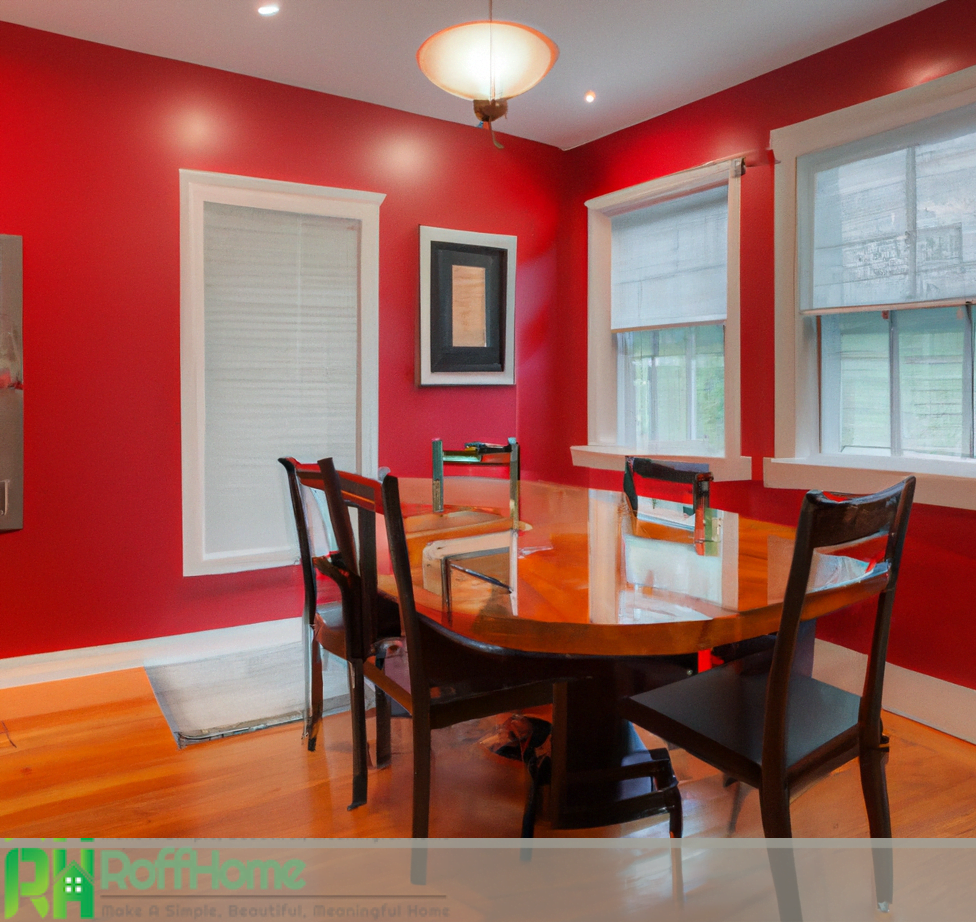
Styling Tips: How to Decorate a Dining Room with Red Walls
Decorating a dining room with red walls offers a unique opportunity to create a captivating and vibrant space. You can achieve a visually stunning and well-balanced design by carefully considering the color scheme, furniture placement, and accessories. Here are some styling tips to help decorate a dining room with red walls.
Color Harmony: Choose a complementary color scheme that harmonizes with the red walls. Neutral tones like white, beige, or cream can help balance the boldness of red, while pops of black or metallic accents can add a touch of sophistication.
Furniture Selection: Opt for furniture pieces that complement the red walls. Dark wood or black furniture can create a dramatic contrast, while lighter shades soften the look. Ensure the scale and proportions of the table are suitable for the size of the room.
Lighting: Pay attention to lighting fixtures, as they can significantly enhance the dining room’s ambiance. Consider pendant lights or chandeliers that add a touch of elegance and provide warm lighting. Dimmers can also be installed to create different moods for various occasions.
Window Treatments: Choose curtains or blinds that complement the red walls and tie the overall look together. Sheer curtains in a lighter color can soften the space, while bold patterns or rich textures can add depth and visual interest.
Artwork and Decor: Select artwork that complements the red walls and enhances the dining room’s aesthetic. Consider pieces with warm colors, abstract designs, or even food-related themes. Mirrors can also be strategically placed to reflect light and make the space feel larger.
Table Setting:
- Please pay attention to the table setting, as it is the focal point of the dining room.
- Choose table linens, dinnerware, and centerpieces harmonizing with the red walls.
- Consider contrasting colors like white or gold to create a visually appealing table arrangement.
Flooring and Rugs: Balance the red walls with a flooring choice that complements the overall design. Wood or neutral-toned tiles can provide a classic look, while a rug with complementary or contrasting hues can define the dining area and add texture to the space.
Greenery: Introduce plants or fresh flowers to add a natural element and bring life to the dining room. Green foliage can provide a refreshing contrast against the red walls and create a harmonious balance.
Red Walls in Small Spaces: Tips for Making a Statement in Cozy Dining Rooms
Red walls in small spaces, particularly in cozy dining rooms, can create a bold and impactful design statement. While decorating a smaller dining area with red walls, it’s important to consider strategies that maximize the space and maintain a harmonious balance. Here are some tips to help you make a statement with red walls in small dining rooms:
Opt for Lighter Shades: Choose lighter shades of red for the walls to create an illusion of space and prevent the room from feeling too overwhelming. Soft, warm red tones can still make a vibrant ambiance without dominating the area.
Accent Wall: Consider creating an accent wall with red paint or wallpaper rather than painting all the walls red. This approach allows you to enjoy the impact of red while preserving the visual openness of the room.
Reflective Surfaces: Incorporate reflective surfaces like mirrors or glass elements to bounce light around the room and create a sense of spaciousness. Mirrors can also create the illusion of depth, making the dining room feel larger.
Strategic Lighting: Optimize the lighting in the dining room to brighten up the space and balance the intensity of the red walls. Use natural light, pendant or recessed lighting, and table lamps to ensure proper illumination and avoid shadows that can make the room feel smaller.
Minimalistic Approach: To prevent space overcrowding, keep the decor and furniture simple and minimalistic. Choose sleek and streamlined furniture with a lighter color palette to complement the red walls without overwhelming the room visually.
Vertical Space Utilization: Use vertical space to maximize storage and display options. Install shelves or wall decor mounted cabinets to keep the floor area clutter-free and create visual interest.
Window Treatments: Opt for light and sheer window treatments that allow natural light to flow into the room while softening the impact of the red walls. Avoid heavy drapes or dark colors that may make the space feel more enclosed.
Cohesive Color Palette: Choose a cohesive color palette for furniture, decor, and accessories to ensure a harmonious look. Incorporate complementary or neutral tones that balance and contrast with the red walls.
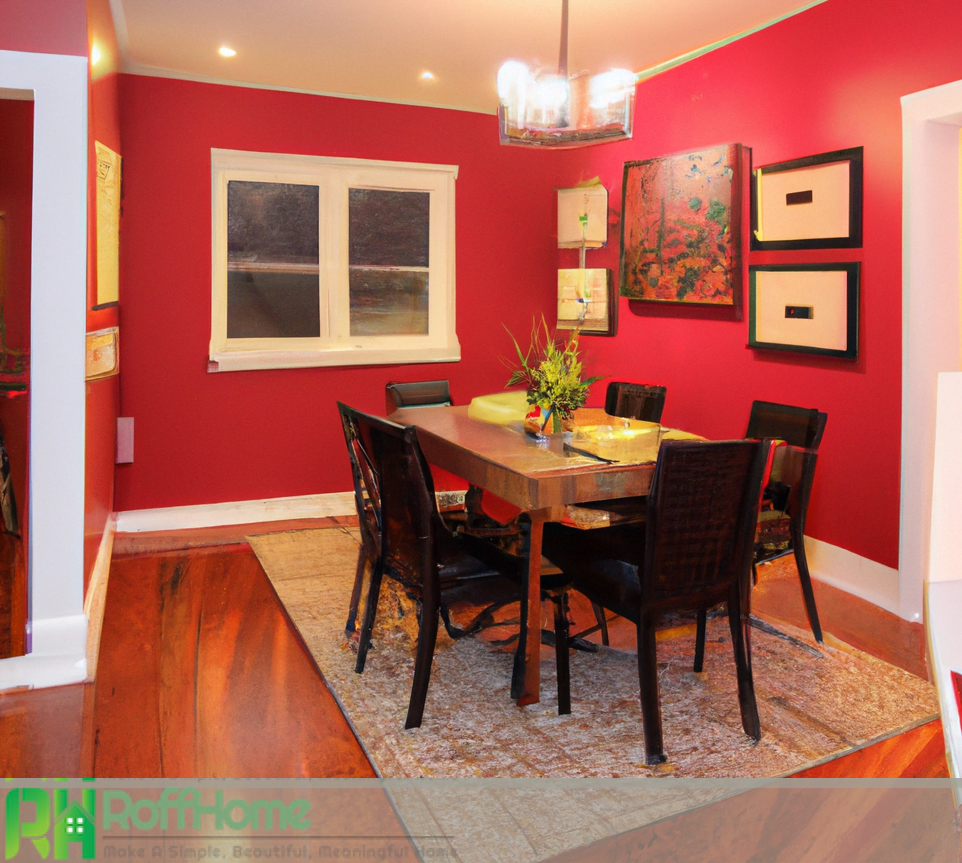
Red Walls vs. Neutral Colors: Pros and Cons for Dining Room Design
When it comes to dining room design, the choice between red walls and neutral colors can significantly impact the overall aesthetic and ambiance of the space. Both options have their own set of pros and cons that should be considered. Let’s explore the advantages and disadvantages of red walls and neutral colors in dining room design.
Red Walls:
Pros:
Bold and Vibrant: Red walls create a striking and energetic atmosphere, making a powerful design statement.
Warm and Inviting: Red is associated with warmth and can evoke a cozy and inviting feeling, setting a comfortable tone for shared meals and conversations.
Appetite Stimulant: Red is believed to stimulate the appetite, making it an excellent choice for a dining room where food is enjoyed.
Adds Drama and Interest: Red walls can instantly add drama, depth, and visual interest to the dining room, making it a beautiful space.
Cons:
Overwhelming in Small Spaces: In smaller dining rooms, red walls can make the space feel visually crowded or intense, potentially diminishing the sense of openness.
Limiting Color Palette: Red can be challenging to coordinate with other colors, making it more difficult to create a cohesive color scheme for furniture, decor, and accessories.
Personal Preference: Red is a solid and assertive color; not everyone may resonate with its intensity or boldness.
Neutral Colors:
Pros:
Versatility: Neutral colors, such as beige, white, or gray, offer a wide range of versatility, making it easier to complement various styles and color schemes.
Timeless Elegance: Neutral tones provide a classic, timeless look that can withstand changing design trends.
Visually Expansive: Lighter neutral colors can visually expand the space, making it feel more open and spacious.
Easy to Coordinate: Neutral walls provide a blank canvas, allowing greater flexibility in choosing furniture, accessories, and decor items.
Cons:
Lack of Visual Impact: Neutral colors may be perceived as safe or less attention-grabbing than red walls, potentially resulting in a more subdued or understated dining room.
Potential for Blandness: If not executed properly, a dining room with neutral walls may lack personality or interest, requiring additional effort in selecting captivating furniture and decor elements.
Less Apparent Warmth: While neutral colors can create a serene and calming atmosphere, they may not evoke the same warmth and energy as red walls.
Bold and Beautiful: Red Wall Paint Ideas for Dining Room
Red wall paint can make a striking statement when creating a bold and beautiful dining room. Red is a color associated with passion, energy, and vibrancy, and using it on the walls of your dining room can create a beautiful and visually stunning space. Here are some red wall paint ideas to inspire your dining room design:
Deep Crimson: Consider using a deep crimson shade for your dining room walls. This rich and intense red creates a luxurious and dramatic ambiance, perfect for formal dining. Pair it with dark wood furniture and gold accents for a wealthy and sophisticated look.
Brick Red: Brick red is a warm and earthy shade of red that adds depth and texture to your dining room. It creates a cozy and inviting atmosphere reminiscent of traditional brick walls. This color pairs well with rustic and modern decor and can compliment neutral or warm-toned furniture.
Ruby Red: Opt for vibrant ruby red paint on your dining room walls for a glamorous and bold look. This jewel-toned shade adds a touch of elegance and luxury, especially when combined with metallic accents and sleek, modern furniture. It creates a captivating and memorable dining experience.
Terracotta Red: Terracotta red is a warm, earthy hue with rustic charm. It can be an excellent choice for a farmhouse or Mediterranean-inspired dining room. Pair it with natural wood and stone, and incorporate warm lighting for a cozy and inviting ambiance.
Cranberry Red: Cranberry red is a slightly muted and sophisticated shade of red. It brings a sense of warmth and richness to the dining room, making it an excellent choice for creating an intimate and cozy atmosphere. Consider pairing it with cream or beige accents for a balanced and elegant look.
Pop of Red: If you prefer a more subtle approach, consider using red as an accent color on one wall, creating a focal point in the dining room. This allows you to enjoy the vibrancy of red without overwhelming the space. Choose a bold red shade and keep the remaining walls neutral to make the accent wall stand out.
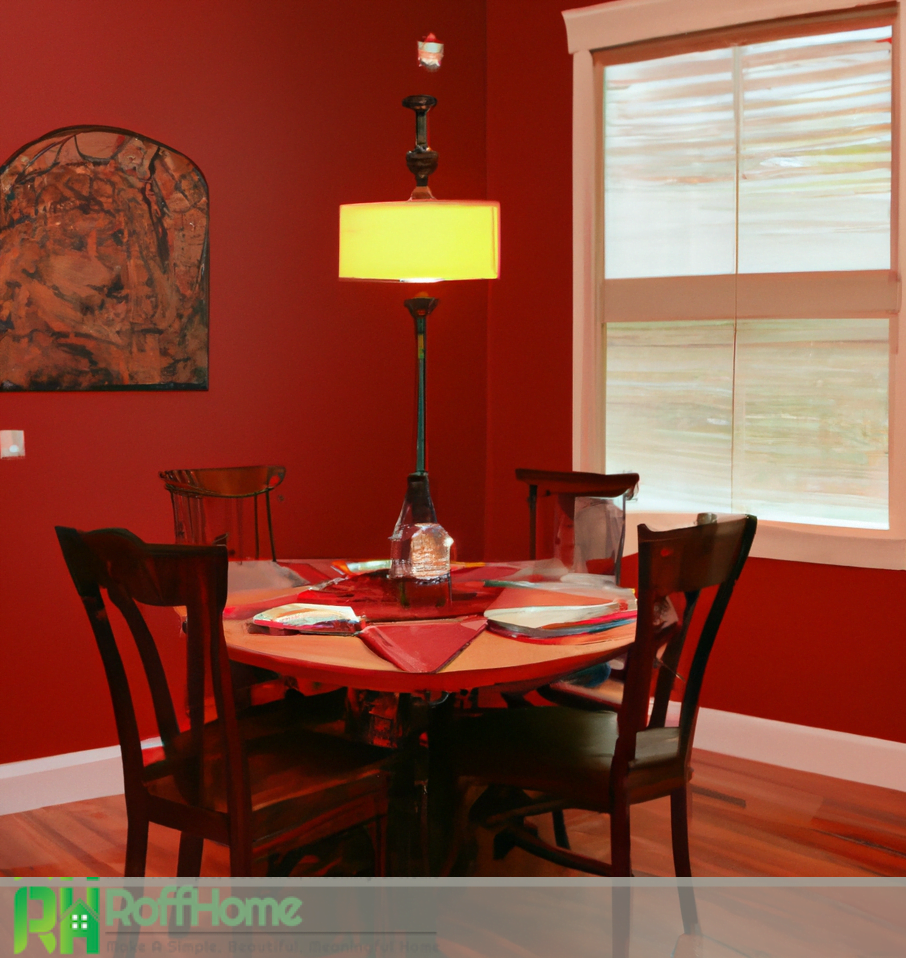
Creating a Cozy Atmosphere in Dining Room with Red Walls
Creating a cozy atmosphere in a dining room with red walls is all about striking a balance between the boldness of the color and the warm, inviting ambiance you want to achieve.
Lighting:
- Pay attention to lighting to set the right mood.
- Opt for soft, warm lighting fixtures that gently glow the dining area.
- Consider using dimmer switches to adjust the intensity of the light according to the occasion and desired atmosphere.
Textiles and Fabrics: Incorporate soft and plush materials to add warmth and comfort to the dining space. Choose upholstered chairs, cushions, and table linens in rich, cozy fabrics such as velvet, suede, or textured materials. This will soften the overall look and create a tactile and inviting environment.
Layered Rugs: Place layered rugs under the dining table to enhance the cozy feel. Combining a plush carpet and a textured or patterned rug can add depth and warmth to the space, making it feel more intimate.
Window Treatments: Consider using window treatments that provide privacy, insulation, and a cozy aesthetic. Curtains or drapes made of heavier fabrics like velvet or lined with thermal materials can help to block out external light and create a warm, snug atmosphere.
Warm Color Accents: Use warm color accents in your decor and accessories to complement the red walls. Earthy tones like brown, terracotta, or deep oranges can add depth and further enhance the cozy atmosphere.
Natural Elements: Incorporate natural elements such as wooden furniture, potted plants, or fresh flowers to bring a sense of warmth and life into the dining room design. These elements connect with nature and add a cozy touch to the space.
Soft Wall Decor: Choose wall decor that contributes to the cozy ambiance. Hang soft, fabric-based artwork or framed textiles that add texture and depth to the walls, complementing the warm atmosphere.
Candlelight: Light scented candles or tea lights during meal times or special occasions to create a warm and intimate atmosphere. The flickering candlelight adds a cozy and romantic glow to the dining room.
From Classic to Contemporary: Red Walls in Different Dining Room Styles
To create unique and visually appealing spaces, red walls can be incorporated into various dining room styles, ranging from classic to contemporary. The choice of red shades, furniture, decor, and accompanying elements play a crucial role in achieving the desired aesthetic. Here’s a look at how red walls can be incorporated into different dining room styles:
Classic Style: In a traditional dining room, red walls evoke elegance and grandeur. Deep, rich shades of red like burgundy or mahogany work well in this dining room styles. Pair the red walls with ornate, dark wood furniture, such as a mahogany dining table and chairs with intricate carvings. Add traditional elements like chandeliers, damask or floral-patterned curtains, and rich textiles to enhance the timeless appeal of the space.
Rustic Style: Red walls add warmth and character to a rustic dining room. Consider using earthy red shades like terracotta or brick red. Pair the red walls with natural materials like exposed brick, reclaimed wood furniture, and warm lighting fixtures. To create a cozy and welcoming atmosphere, incorporate rustic elements such as farmhouse-style tables, vintage-inspired accessories, and botanical prints.
Modern Style: Red walls can bring a bold and contemporary vibe to a modern dining room styles. Opt for brighter and more vibrant red shades like ruby red or crimson. Keep the furniture sleek and minimalistic, with clean lines and neutral tones to balance the intensity of the red walls. Consider incorporating modern lighting fixtures, minimalist artwork, and statement furniture pieces to create a visually striking, cutting-edge look.
Eclectic Style: Red walls can serve as a vibrant backdrop for various styles and elements in an eclectic dining room styles. Choose a red shade that complements the diverse color palette and mix it with multiple furniture pieces in different styles and finishes. Experiment with patterns, textures, and accessories to create a visually exciting and personalized space.
Scandinavian Style: Red walls can add warmth and coziness to a Scandinavian dining room design. Opt for a softer shade of red, like dusty rose or muted cranberry. Pair the red walls with light-colored, minimalist furniture, natural wood accents, and clean lines. Incorporate soft textiles like sheepskin rugs or textured cushions to create a hygge-inspired ambiance.
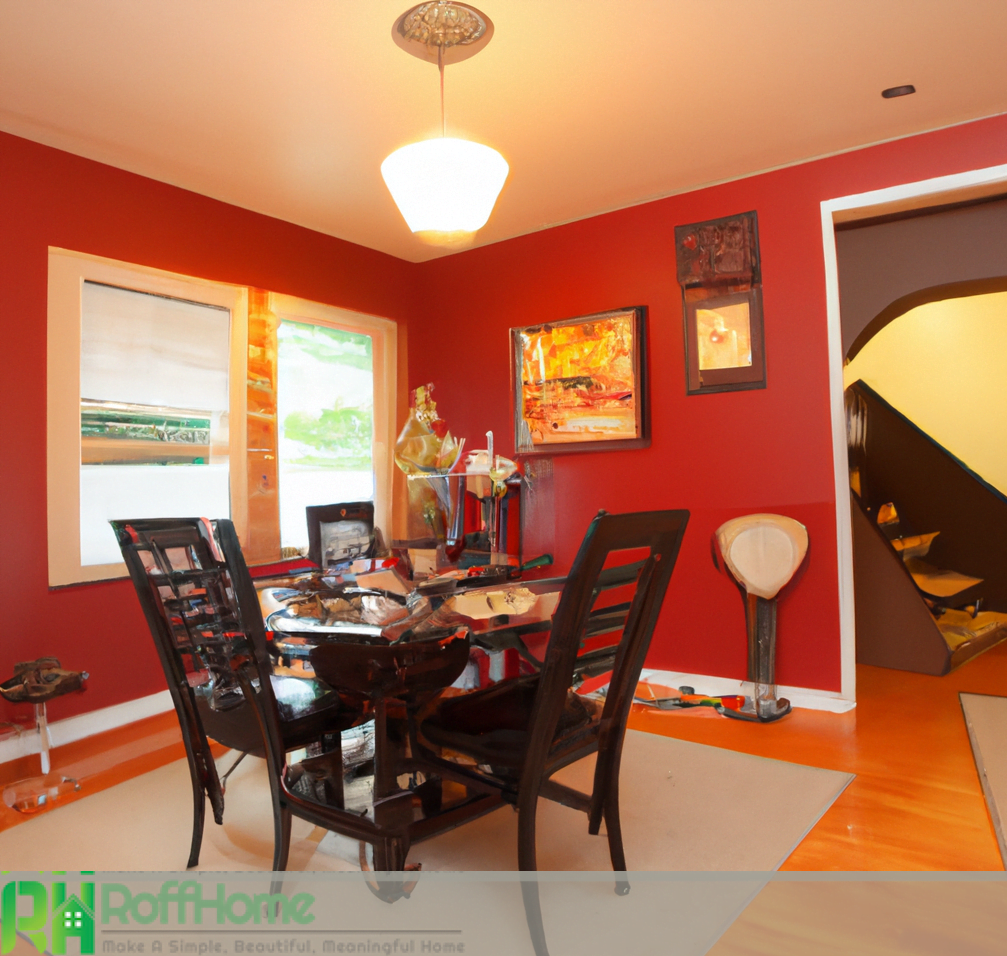
Maintaining and Cleaning Red Walls in the Dining Room: Tips and Tricks
Maintaining and cleaning the dining room with red walls is essential to keep them looking vibrant and beautiful over time. Here are some valuable tips and tricks to help you effectively maintain and clean your red walls:
Regular Dusting: Dust your red walls regularly using a soft microfiber cloth or the feather duster. This helps prevent dust buildup and keeps the walls clean and fresh. Avoid using abrasive materials that could damage the paint.
Gentle Cleaning Solutions:
- For routine cleaning, use a mild cleaning solution.
- Mix a small dish soap or a gentle all-purpose cleaner with warm water.
- Damp a soft cloth or sponge in the solution and gently wipe the walls in a circular motion.
- Be cautious not to scrub too hard, as it may damage the paint or leave streaks.
Spot Cleaning:
- In case of spills or stains, address them promptly to prevent them from setting into the paint.
- A clean cloth or sponge dampened with the water or the mild cleaning solution mentioned above, gently blot the stained area.
- Avoid rubbing vigorously, as it may cause the stain to spread or damage the paint.
Test in an Inconspicuous Area: Before using any cleaning solution or method, it’s recommended to be tested in an inconspicuous area of the red walls to ensure it doesn’t cause discoloration or damage. Allow the sampled area to dry completely before proceeding with the cleaning.
Avoid Harsh Chemicals: Harsh chemicals, abrasive cleaners, or solvents should be avoided when cleaning red walls, as they can strip the paint, cause fading, or leave a residue. Stick to mild, non-abrasive cleaning solutions to protect the integrity of the color.
Preventative Measures: To minimize the need for frequent cleaning, consider taking preventive measures. Place furniture with protective pads to avoid scuff marks or scratches on the walls. Hang artwork or mirrors securely to prevent accidental damage. Use mats or runners on the floor to catch dirt or debris and reduce the chances of transferring it to the wall decor.
Professional Maintenance: If your red walls require extensive cleaning or if you’re uncertain about the best approach, it’s recommended to consult with professional cleaners or painters who have experience with maintaining and cleaning painted walls.
In conclusion, a dining room with red walls can create a bold and inviting space. The choice of red shades, complementing decor, and proper maintenance can transform the dining room into a vibrant and captivating environment, enhancing the overall dining experience.

